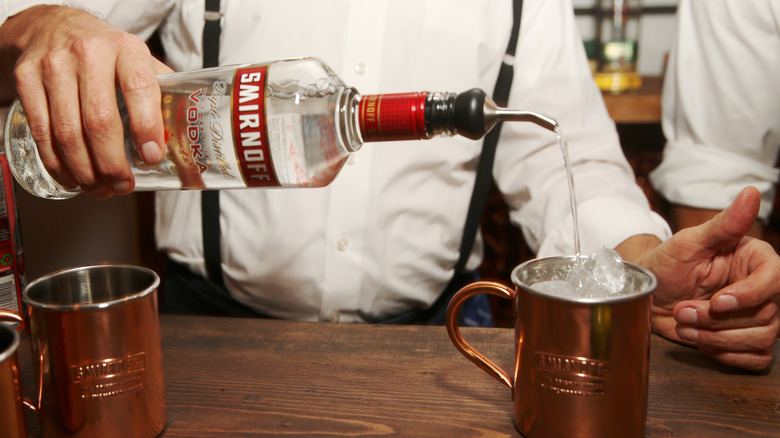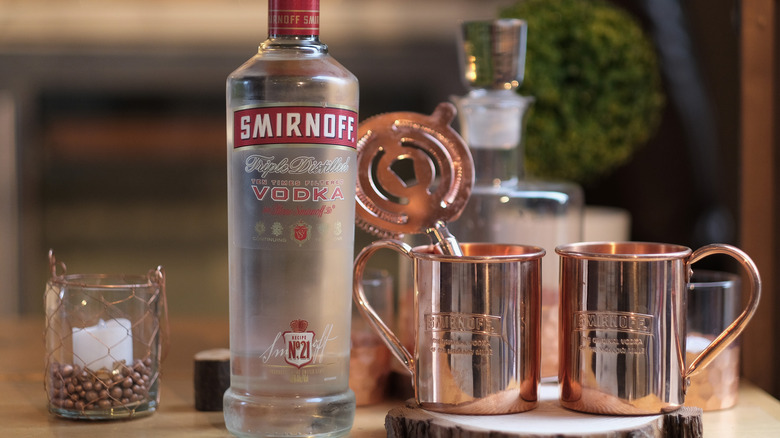How The Moscow Mule Saved Smirnoff
If you are looking for a not-too-tart, not-too-sweet, vibrantly refreshing cocktail that's simple to make (and even easier to swig), pay mind to the mighty Moscow Mule. The Moscow Mule is an iconic cocktail made with ginger beer, lime juice and vodka. It's known for being commonly served in a chilled copper mug, a container that not only makes the patron look awesome, but also keeps the drink consistently cool due to its chemical structure (per Moscow Copper Co.). And despite its clever alliterative name, the concoction was not invented in the Russian capital, but rather in a British pub in Los Angeles, California (via Liquor).
The Moscow Mule's history is wildly fascinating. The Moscow Mule made its debut in 1941 at Cock'n Bull, a popular watering hole in Santa Monica at which hungry and thirsty folks would gather to watch European football games, throw back a few, and enjoy the atmosphere. An instant hit, the ever-classic libation was originally called the Smirnoff Mule, fittingly named after the vodka brand that was used in the introductory recipe. In fact, the Mule is believed to have quite literally saved the distillery from folding in the 20th century due its overnight fame (via Thrillist).
How did the Moscow Mule save the Smirnoff vodka brand?
Cocktail historians say that the first Moscow Mule recipe was purely serendipitous. After a rather slow shift, Cock'n Bull bartender Wes Price decided to get creative and combine two ingredients that were seldom ordered individually — or at all. One night, Price was cleaning out the bar's basement and stumbled upon several cases of house-made ginger beer and Smirnoff vodka that would have otherwise gone to waste. When he combined the two, he discovered that the result was not half bad. Actually, it tasted amazing.
So, how did the famous Moscow Mule salvage the Smirnoff brand? In 1914, right before the Russian Revolution, alcohol was completely banned in Russia, a governmental ruling that forced Smirnoff to close its doors. However, the company was able to revive itself in 1925 in Nice, France thanks to the distillery's heir, Vladimir Smirnov. Eventually in 1933, Smirnoff moved its assets to the U.S. when Rudolph Kunett, a Russian expatriate living in New York, acquired the company (via Smirnoff). However, prior to this time, vodka was not a sought-after spirit in America, as whiskey was the longtime top seller. Dodging bankruptcy, Kunett sold the brand to John Martin of Heublein, Inc. in Hartford, Connecticut for $14,000 (via Thrillist). Upon a successful rebrand, which included a spotlight on the Moscow Mule recipe in advertisements, Smirnoff vodka sales skyrocketed stateside.

